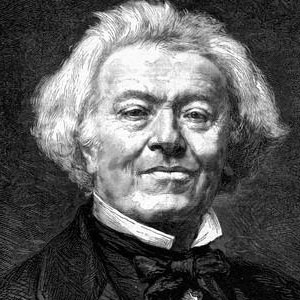
After an apprenticeship of five years in a drapery business, Jean Baptiste Corot studied painting from 1822 to 1825, first under the painter Michallon, then under the Classical landscape painter Victor Bertin, and copying works by Joseph Verner and others, including the 17th century Dutch masters. Convinced that "man can only be an artist when he has recognized in himself a strong passion for nature", he painted, or mostly sketched, outdoors, working in the forest of Fontainebleau, at Dieppe, Le Havre, Rouen and at Ville d' Avray where his father owned a house. His first visit to Rome from 1825 to 1828, which was to become decisive in his artistic development, produced a number of oil-studies painted from nature, views of historical Roman monuments and the scenery surrounding Rome. They are of an unusual freshness, catching the light and atmosphere of different times of the day with delightfully subtle variations in tonal values. The actual paintings based on these studies, for example, the "View of Narni" (Ottawa, National Gallery of Canada, 1826), painted for the 1827 Paris Salon, are in comparison rather formal, in the manner of the New Classicism. On his return from Italy, Corot worked in various parts of France. He also visited Italy again (in 1834 and 1843), and went to Holland (1854) and England (1862). His friendship in the late 1840s with the Barbizon painters Rosseau, Millet, Troyon and Dupre greatly influenced his art. Around this time he changed his style; his romantic-lyrical landscapes ("Paysages in times") interpret nature in her various moods, and in the most delicate dull silver tones. His landscapes had an inspiring influence on the Impressionists, who wished to include him in their first Exhibition.
After an apprenticeship of five years in a drapery business, Corot studied painting from 1822 to 1825, first under the painter Michallon, then under the Classical landscape painter Victor Bertin, and copying works by Joseph Verner and others, including the 17th century Dutch masters. Convinced that "man can only be an artist when he has recognized in himself a strong passion for nature", he painted, or mostly sketched, outdoors, working in the forest of Fontainebleau, at Dieppe, Le Havre, Rouen and at Ville d' Avray where his father owned a house. His first visit to Rome from 1825 to 1828, which was to become decisive in his artistic development, produced a number of oil-studies painted from nature, views of historical Roman monuments and the scenery surrounding Rome. They are of an unusual freshness, catching the light and atmosphere of different times of the day with delightfully subtle variations in tonal values. The actual paintings based on these studies, for example, the "View of Narni" (Ottawa, National Gallery of Canada, 1826), painted for the 1827 Paris Salon, are in comparison rather formal, in the manner of the New Classicism.
On his return from Italy, Corot worked in various parts of France. He also visited Italy again (in 1834 and 1843), and went to Holland (1854) and England (1862). His friendship in the late 1840s with the Barbizon painters Rosseau, Millet, Troyon and Dupre greatly influenced his art. Around this time he changed his style; his romantic-lyrical landscapes ("Paysages in times") interpret nature in her various moods, and in the most delicate dull silver tones. His landscapes had an inspiring influence on the Impressionists, who wished to include him in their first Exhibition.
